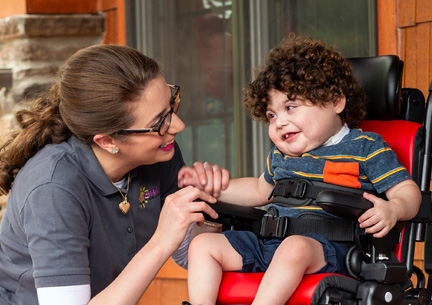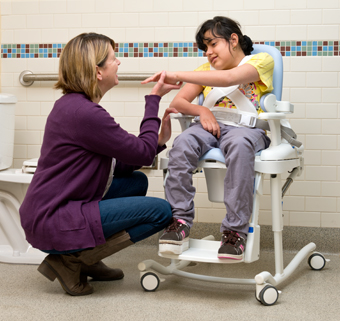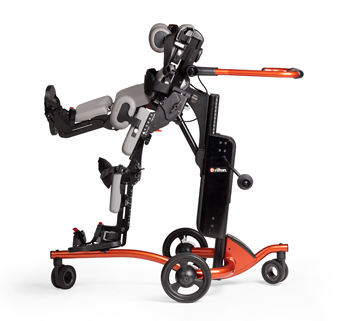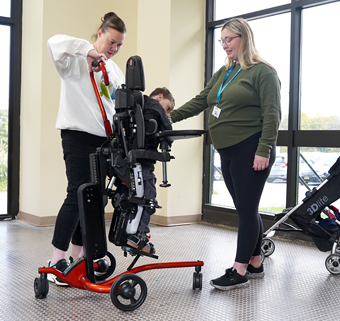Dynamic Standing versus Passive Standing Interventions
A research summary
| October 2013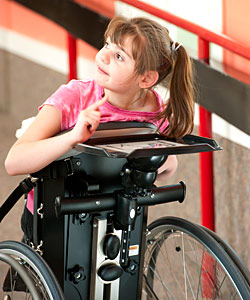
For children with developmental disabilities who are non-ambulatory or have minimal capabilities to move, passive standing in an adaptive stander is an important intervention with resulting benefits in many of the body’s systems including the musculoskeletal system. However, research is now leading us to believe that opportunities for dynamic standing can be even more beneficial especially for the maintenance and building of bone mineral density in the cortical long bones of children with cerebral palsy. A recent research article in the fall issue of Pediatric Physical Therapy provides a good perspective on dynamic standing. The study is called “Effects of passive versus dynamic loading interventions on bone health in children who are non-ambulatory.”
The purpose of this study was to apply the type of lower-extremity forces usually experienced during ambulation to the standing position (referred to as dynamic loading) and compare this to a passive standing intervention. The study notes that research supports this dynamic, mechanical loading for bone health and bases some of their pilot intervention on preliminary research by Frost et al whose data collecting with a mechanostat suggested that repetitive and reciprocal loading of bones would maximize bone mass.
Nine children who had cerebral palsy and were non-ambulatory participated in 15 months of standing intervention in either the passive or dynamic group. The dynamic group stood in standers with novel footplates which mimicked the vertical displacements experienced during ambulation. But while in normal gait a person’s lower extremity will take from 0 percent body weight in swing phase to 100 percent body-weight loading during single-leg-stance phase, the forces in this study were maintained in a reciprocal loading pattern from 5 percent to 25 percent of body weight to accommodate for the study sample’s increased risk of fractures.
Bone mineral density was measured at 3 month intervals with dual-energy x-ray absorptiometry (DXA) scans in the children’s femurs. The children in the dynamic standers showed significant increases in bone mineral density during the study whereas the children in the passive standing group maintained their levels of bone mineral density without increase. Both groups also showed increases in bone mineral content with the dynamic group maintaining this increase for longer periods of time.
This study certainly is of interest and may influence future adaptive standing interventions for the pediatric population. It is important to note that the dynamic intervention provided moderate increases in the femurs of children with cerebral palsy, a bone very susceptible to fractures in the population. Furthermore, this dynamic loading intervention builds upon current adaptive standing interventions and may be quite feasible in a classroom setting as well. The study also underlines what therapists know best—that movement and the active stimulation of the musculoskeletal system often produces better outcomes than most passive interventions.
Reference: Damcott M, Blochlinger S, Foulds R. Effects of passive versus dynamic loading interventions on bone health in children who are non-ambulatory. Pediatr Phys Ther. 2013;25:248-55.
